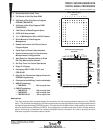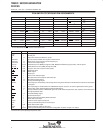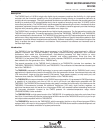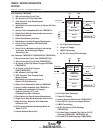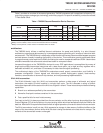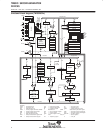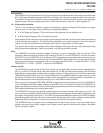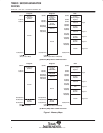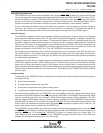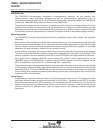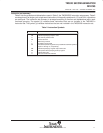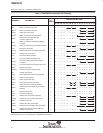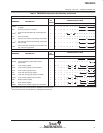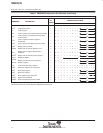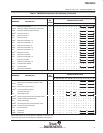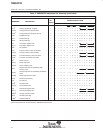
TMS320 SECOND-GENERATION
DEVICES
SPRS010B — MAY 1987 — REVISED NOVEMBER 1990
POST OFFICE BOX 1443 • HOUSTON, TEXAS 77001
9
interrupts and subroutines
The TMS320C2x has three external maskable user interrupts INT2-INT0, available for external devices that
interrupt the processor. Internal interrupts are generated by the serial port (RINT and XINT), by the timer (TINT),
and by the software interrupt (TRAP) instruction. Interrupts are prioritized with reset (RS
) having the highest
priority and the serial port transmit interrupt (XINT) having the lowest priority. All interrupt locations are on
two-word boundaries so that branch instructions can be accommodated in those locations if desired.
A built-in mechanism protects multicycle instructions from interrupts. If an interrupt occurs during a multicycle
instruction, the interrupt is not processed until the instruction is completed. This mechanism applies to
instructions that are repeated and to instructions that become multicycle due to the READY signal.
external interface
The TMS320C2x supports a wide range of system interfacing requirements. Program, data, and I/O address
spaces provide interface to memory and I/O, thus maximizing system throughput. I/O design is simplified by
having I/O treated the same way as memory. I/O devices are mapped into the I/O address space using the
processor’s external address and data buses in the same manner as memory-mapped devices. Interface to
memory and I/O devices of varying speeds is accomplished by using the READY line. When transactions are
made with slower devices, the TMS320C2x processor waits until the other device completes its function and
signals the processor via the READY line. Then, the TMS320C2x continues execution.
A full-duplex serial port provides communication with serial devices, such as codecs, serial A/D converters, and
other serial systems. The interface signals are compatible with codecs and many other serial devices with a
minimum of external hardware. The serial port may also be used for intercommunication between processors
in multiprocessing applications.
The serial port has two memory-mapped registers: the data transmit register (DXR) and the data receive register
(DRR). Both registers operate in either the byte mode or 16-bit word mode, and may be accessed in the same
manner as any other data memory location. Each register has an external clock, a framing synchronization
pulse, and associated shift registers. One method of multiprocessing may be implemented by programming one
device to transmit while the others are in the receive mode. The serial port on the TMS320C25 is double-buffered
and fully static.
multiprocessing
The flexibility of the TMS320C2x allows configurations to satisfy a wide range of system requirements and can
be used as follows:
• A standalone processor
• A multiprocessor with devices in parallel
• A slave/host multiprocessor with global memory space
• A peripheral processor interfaced via processor-controlled signals to another device.
For multiprocessing applications, the TMS320C2x has the capability of allocating global data memory space
and communicating with that space via the BR (bus request) and READY control signals. Global memory is data
memory shared by more than one processor. Global data memory access must be arbitrated. The 8-bit
memory-mapped GREG (global memory allocation register) specifies part of the TMS320C2x’s data memory
as global external memory. The contents of the register determine the size of the global memory space. If the
current instruction addresses an operand within that space, BR is asserted to request control of the bus. The
length of the memory cycle is controlled by the READY line.
The TMS320C2x supports DMA (direct memory access) to its external program/data memory using the HOLD
and HOLDA signals. Another processor can take complete control of the TMS320C2x’s external memory by
asserting HOLD
low. This causes the TMS320C2x to place its address data and control lines in a
high-impedance state, and assert HOLDA. On the TMS320C2x, program execution from on-chip ROM may
proceed concurrently when the device is in the hold mode.



